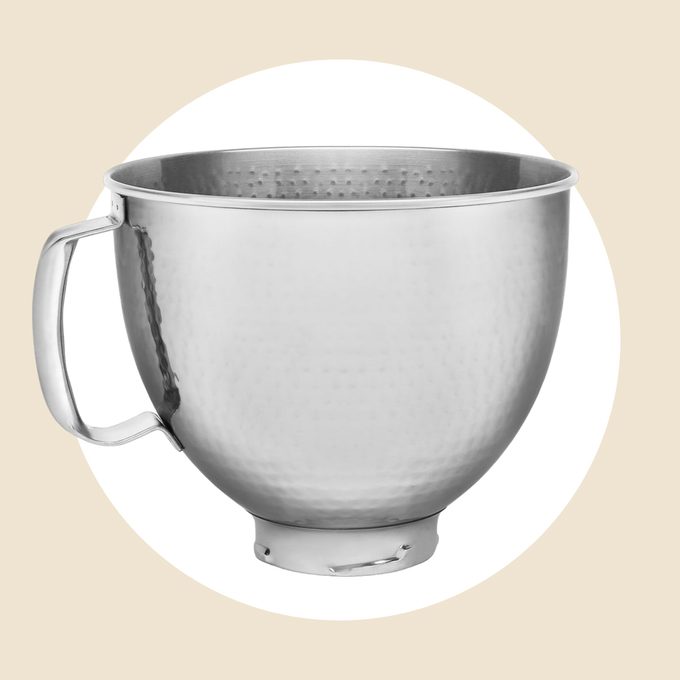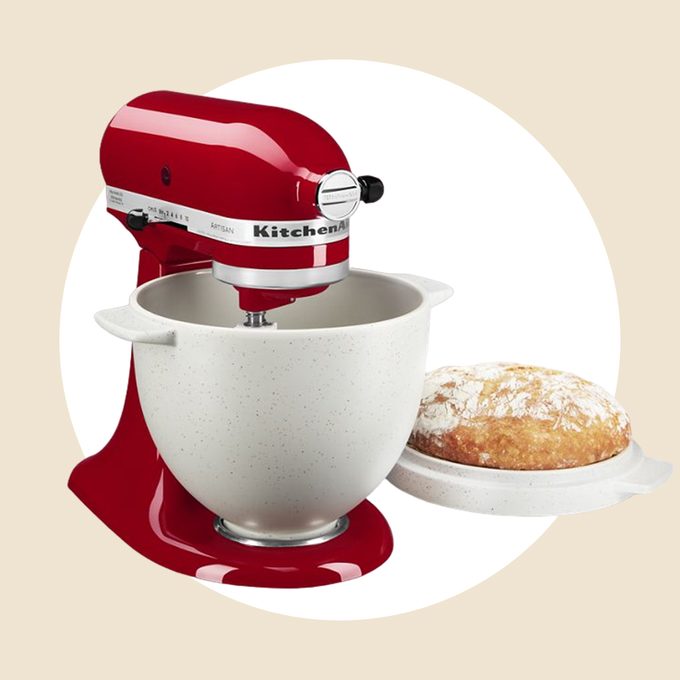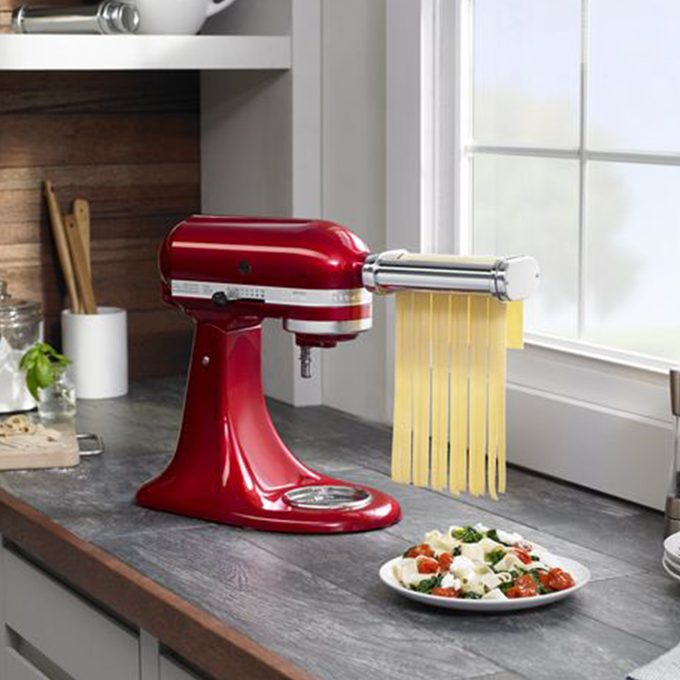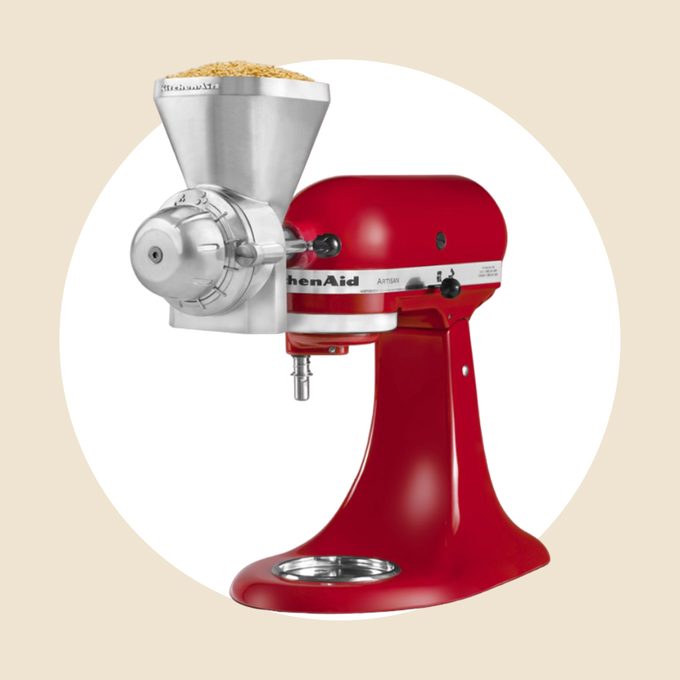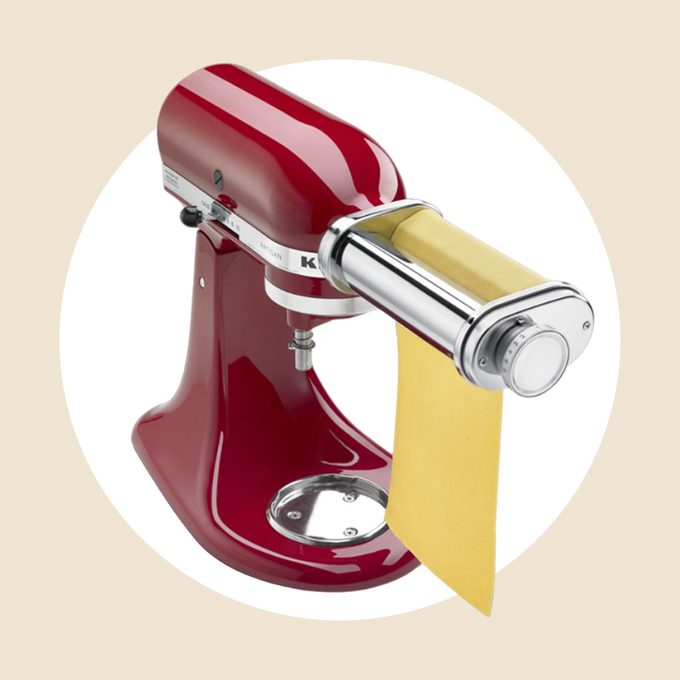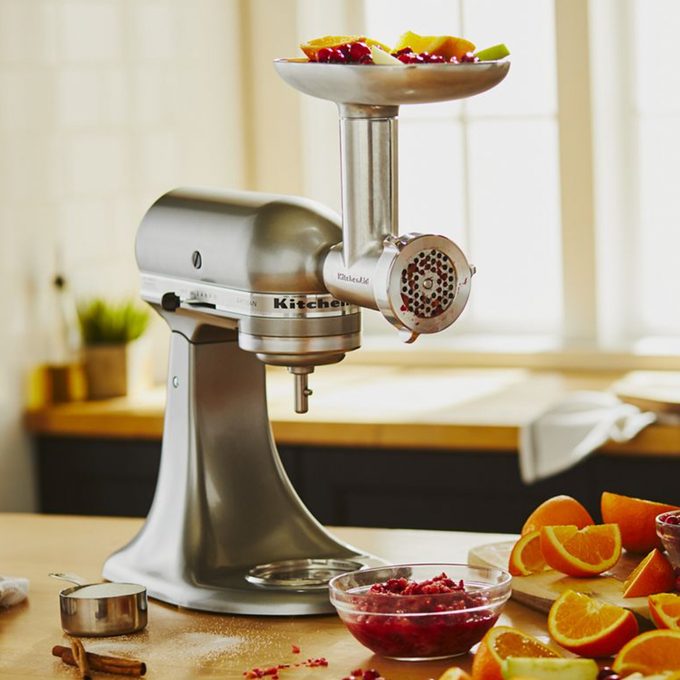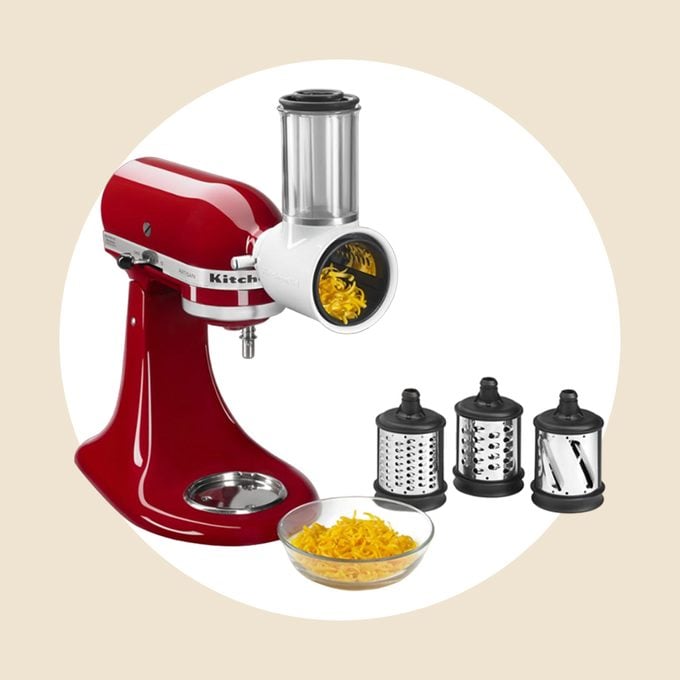Your KitchenAid Stand Mixer Becomes So. Much. More. with Attachments and Accessories
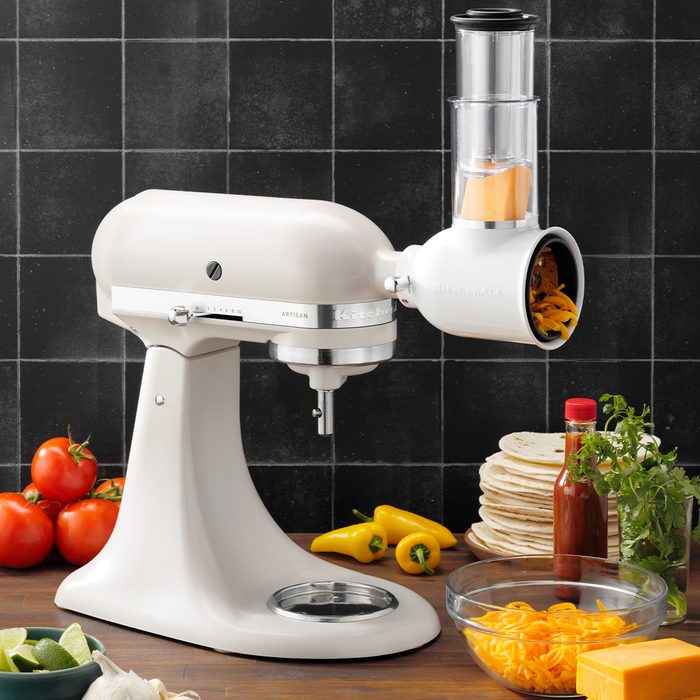
Go beyond baking with help from KitchenAid add-ons.
Sponsored By: KitchenAid
This piece was created in partnership with KitchenAid, a leader in the home appliance space since 1919.
Whether you’re preparing fresh, homemade pasta, processing fruits and vegetables or grinding meats, it’s a snap to take your KitchenAid Stand Mixer to another level with these fantastic (and fun) accessories, attachments and tools. Take a look at these options and create a stand mixer sure to take your culinary skills to new heights.
Stand Mixer Accessories
All KitchenAid Stand Mixers come with a mixing bowl, dough hook, flat beater and wire whip. Some models even include a pastry beater accessory and a pouring shield. With these incredibly handy basics, the perfect tool is always at your fingertips.
Mix It Right
Whips/Whisks: Use the Wire Whip when you need to aerate something to make it light and fluffy, such as eggs, meringue, mousse or whipped cream. You can also use the Wire Whip to emulsify ingredients, such as mayonnaise and salad dressing.
Flat Beater: When making cakes, brownies or cookies, the Flat Beater is the accessory you want to grab. Flat Beaters can also be used to pull pork, mash potatoes, mix guacamole or even combine the ingredients in meatball and meat loaf recipes.
Pastry Beater: A smart replacement for handheld pastry cutters and blenders, this stainless steel beater cuts butter into flour for flaky pastries and makes shredding and mashing a snap.
Dough Hook: This accessory is a must-have for any cook who enjoys preparing homemade dough. From bread dough to freshly made pasta, if it requires kneading, this tool opens all sorts of time-saving possibilities.
Pouring Shields: Adding ingredients while mixing has never been easier or less messy, because these kitchen helpers keep flour and liquids inside the bowl.
Bowls, Bowls and More Bowls
KitchenAid also offers several mixing bowls and other accessories to help you customize a stand mixer that’s perfect for you and the family favorites you prepare. Check that your choice of mixing bowl is the right size for your stand mixer and is made for your specific model, whether a bestselling bowl-lift or tilt-head stand mixer.
Stainless Steel Mixing Bowls: Stainless steel is a durable, yet lightweight, option for easily transferring contents. Go with the classic handleless bowl or try one with a flat handle for easy gripping. For elevated style, try the hammered stainless steel bowl for tilt-head mixers.
Glass Mixing Bowls: The clear glass mixing bowl is microwavable so you can easily melt or heat ingredients right in the bowl. It also has a handle, a pour spout and measuring markers, so it functions like a giant measuring cup. You can choose from 3.5-, 5- and 6-quart sizes.
Ceramic Mixing Bowls: Get ready to impress! These pretty bowls are available in many colors and patterns, adding a touch of style to your kitchen and even to your dining table.
Bread Bowl with Baking Lid: This bread bowl helps emulate a steam oven. How cool is that? The bowl traps steam and evenly distributes heat for breads with a crusty exterior and a soft interior.
Mixing Bowl Lids: KitchenAid bowl lids are perfect for covering dough that is resting—and make it a snap to store leftovers. These dishwasher-safe lids are even available with pouring spouts for glass mixing bowls.
Stand Mixer Attachments
You can easily transform your KitchenAid Stand Mixer into a variety of small kitchen appliances. Simply connect attachments to the stand mixer’s power hub and create something exciting.
Pasta, Anyone?
The KitchenAid pasta maker attachments help you get the authentic taste of fresh pasta whenever you want, right in your own kitchen. Prepare a variety of homemade pastas that range from family favorites like traditional spaghetti to change-of-pace ravioli.
Five-Piece Pasta Deluxe Set: This set comes with a pasta roller and capellini, spaghetti, fettuccine and lasagnette cutters.
Gourmet Pasta Press: This press makes six shapes of pasta, including rigatoni and macaroni.
All-Metal Grain Mill: Boost nutrients at your table with homemade grain pasta. This versatile attachment makes it easy to add freshly ground grains and flour to pasta for hearty texture and unbeatable flavor. Use it for your baked goods, too!
Pasta Roller: Use this basic pasta roller to create lasagna noodles or hand-cut or stuffed pastas.
Three-Piece Pasta Roller & Cutter Set: An introductory set, this package includes the pasta roller and the spaghetti and fettuccine cutters.
For the Meat Lover
Whether making freshly ground beef for burgers or stuffing sausage with your own mix of spices, you can use a Food Grinder Attachment to create quality dishes that always delight.
Food Grinder Attachment: With the food tray, food pusher, grinding auger, metal blade and grinding plates, you can grind both coarse and fine textures.
Metal Food Grinder Attachment: This all-metal attachment includes three grinding plates, a large food tray and two sausage tubes.
Sausage Stuffer Kit: Show off your specialty charcuterie skills by making your own sausage in two sizes: breakfast sausage links, or Italian sausage, bratwurst and other larger links.
Healthy Foods Made Fast
Eating right doesn’t have to tax your time or put creativity on the back burner. Let these attachments help.
Spiralizer with Peel, Core and Slice: Dress up meals with spiralized zucchini or sweet potatoes, and quickly slice apples and pears for tasty desserts.
Citrus Juicer: This attachment extracts healthy juices from fruits directly into a bowl, pitcher or measuring cup. Best of all, it catches seeds in its built-in strainer.
Fresh Prep Slicer/Shredder: It’s easier than ever to add freshly sliced or shredded ingredients to salads, entrees, sides and more. This handy attachment uses the power of the stand mixer to process veggies, fruit and other items in minutes. Equipped with three blades, if offers endless slicing and shredding possibilities.
Sponsored
![]()
